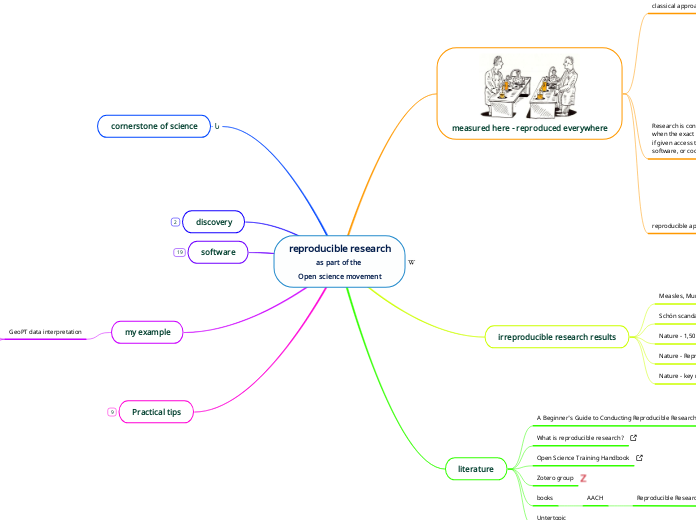reproducible research
as part of the
Open science movement
measured here - reproduced everywhere
classical approach
data collection
local PC
interpretation
Excel
presentation
publication
journal
talk
ppt
poster
Research is considered to be reproducible when the exact results can be reproduced if given access to the original data, software, or code.
The "what" that needs to be reproduced is typically:
* Actual results themselves, which includes:
- Tables
- Visualizations/figures/graphs
- Values reported in the text
* The statistical evidence in support of the findings (e.g., p-values, confidence intervals, credible intervals).
* Data reduction procedures (normalisation values, corrections etc.)
Requirements for demonstrating the reproducibility
There is widespread agreement that research can only be reproducible when:
- The "raw" data is available, where "raw" refers to the data prior to any manipulation by the researcher (e.g., prior to any data cleaning and transformation).
- A complete set of instructions is provided explaining all steps used in the processing and analyzing the data.
Providing a set of files containing the
data
code
data derived tables, charts, graphics
Details about the system being used to run the analysis
specific version
software packages
libraries
Open/transparent
all data and materials are available
e.g. GitHub
The entire report is written using code
reproducible approach
raw data
data gathering
analysis
presentation
irreproducible research results
Measles, Mumps, and Rubella (MMR) vacince and autism
Schön scandal
Nature - 1,500 scientists lift the lid on reproducibility
Nature - Reproducibility: A tragedy of errors
Nature - key reads
literature
A Beginner's Guide to Conducting Reproducible Research
What is reproducible research?
Open Science Training Handbook
Zotero group
books
AACH
Reproducible Research with R and RStudio
on GitHub
Untertopic
cornerstone of science
discovery
software
my example
GeoPT data interpretation
data source
Dropbox
code
R
RStudio
manuscript
submission to GGR
